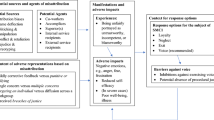Abstract
In May 1971, Lionel C. Skaggs, director of personnel services at UAB, issued a memorandum regarding the grievance procedure for nonacademic employees. The memo recommended that the university speed up the timetable for proposed revisions to those procedures, noting that such changes had “been under consideration for some time.”1 Skaggs urged his fellow administrators “to move with some dispatch,” requesting feedback in less than a week’s time. Skaggs’ sense of urgency was not the product of frustration with bureaucratic delays. Nor was he motivated by concern for ensuring that university employees received due consideration of their on-the-job complaints. Rather, Skaggs’ recommendation was a direct response to what he termed “recent evidence of employee unrest.”2 His hope was that, by expediting the implementation of new grievance procedures, he could prevent this unrest from spreading.
Access this chapter
Tax calculation will be finalised at checkout
Purchases are for personal use only
Preview
Unable to display preview. Download preview PDF.
Similar content being viewed by others
Notes
The Charleston strike had also included struggles to balance issues of race with issues of class, a fact that was revealed in the slogan “Union Power, Soul Power.” Leon Fink and Brian Greenberg, Upheaval in the Quiet Zone: A History of the Hospital Workers’ Union Local 1199 (Urbana and Chicago: University of Illinois Press, 1989), Chapter 7.
Ibid.; Adams also took a moment to mention the cable television controversy in which he was involved. In short, a group of black investors were attempting to challenge the cable monopoly in Birmingham. For further discussion see Jimmie Lewis Franklin, Back to Birmingham: Richard Arrington, Jr. and His Times (Tuscaloosa: University of Alabama Press, 1989).
Copyright information
© 2013 Robert W. Widell, Jr.
About this chapter
Cite this chapter
Widell, R.W. (2013). The Public Employees Organizing Committee. In: Birmingham and the Long Black Freedom Struggle. Contemporary Black History. Palgrave Macmillan, New York. https://doi.org/10.1057/9781137340962_7
Download citation
DOI: https://doi.org/10.1057/9781137340962_7
Publisher Name: Palgrave Macmillan, New York
Print ISBN: 978-1-349-46501-9
Online ISBN: 978-1-137-34096-2
eBook Packages: Palgrave History CollectionHistory (R0)




